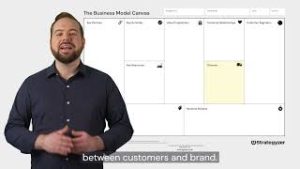Episode 9: Value Proposition Canvas Basics
If you are creating a Mobile App, then creating a Value Proposition Canvas might not be something that leaps to mind. But it’s a valuable and important step in the process of creating mobile apps. If you’re curious as so what a Value Proposition Canvas is, why it’s important, and how to develop one, then you’re in the right place. In this video, we go over everything you need to know about Value Proposition Canvases.
We go over what a Value Proposition Canvas is for a mobile app, and how to lay the groundwork for one. Then we take you through several of the major potential ideas you’ll want to think about when creating your Value Proposition Canvas for your mobile app development. So check out this video today for everything you need to know about this step of the mobile app development process.
Table of Contents
In this episode, we’re diving into the fundamental concept of the Value Proposition Canvas, a powerful tool for understanding and improving the value your products or services offer to your target customers. Whether you’re a seasoned entrepreneur or just starting your business journey, understanding the Value Proposition Canvas can be a game-changer in designing products and services that truly resonate with your audience.
Understanding the Value Proposition Canvas
Before we get into the nitty-gritty details, let’s establish what the Value Proposition Canvas (VPC) is all about. Developed by Alex Osterwalder and Yves Pigneur, the VPC is a visual framework that helps businesses and entrepreneurs analyze, design, and improve their value propositions. It’s part of the broader Business Model Canvas, which provides a comprehensive view of a business’s operations.
The VPC consists of two key components: the Customer Profile and the Value Map.
Customer Profile: Understanding Your Customer
The Customer Profile side of the canvas is all about understanding your customers on a deep level. It’s not just about demographics but delving into their pains, gains, and jobs to be done.
- Customer Segments: Start by identifying your customer segments, which are distinct groups of people or organisations you aim to serve. Segmenting your audience helps you tailor your value proposition to specific needs and preferences.
- Customer Jobs: What are the main jobs your customers are trying to accomplish? These can be functional tasks, emotional needs, or social goals. Understanding their jobs helps you create solutions that address their core needs.
- Pains: What are the obstacles, frustrations, or challenges your customers face when trying to accomplish their jobs? Pains represent the negative aspects of their experience.
- Gains: Gains are the benefits, outcomes, or positive experiences your customers desire. These can be related to saving time, money, reducing stress, or achieving personal goals.
Value Map: Designing Your Value Proposition
Now that you have a clear understanding of your customers, it’s time to design your Value Map, which outlines how your product or service alleviates pains and creates gains for your target audience.
- Products and Services: List the products and services you offer. These are the solutions you provide to address your customers’ needs and desires.
- Pain Relievers: Explain how your products or services alleviate the pains identified in the Customer Profile. This could involve solving specific problems, removing obstacles, or reducing negative experiences.
- Gain Creators: Describe how your offerings create gains for your customers. What positive outcomes or benefits do they derive from using your products or services?
The Connection: Aligning Customer and Value
The power of the Value Proposition Canvas lies in its ability to connect the Customer Profile with the Value Map. This alignment ensures that your offerings directly address the needs and desires of your target audience. Here’s how it works:
- Fit: Analyze the fit between your customer segments and the products/services you offer. Are you solving their pains and creating gains that matter to them?
- Pain-Product Fit: Ensure that your products or services effectively address the pains identified in the Customer Profile. If your solution doesn’t alleviate their pains, it’s less likely to resonate with your audience.
- Gain-Product Fit: Similarly, verify that your offerings genuinely create the desired gains for your customers. This alignment ensures that your value proposition is compelling.
- Alignment Optimisation: Continuously iterate and optimise your value proposition by refining your understanding of customer segments, jobs, pains, and gains. The more closely aligned your Value Map is with your Customer Profile, the more likely you are to succeed in the market.
Conclusion
In this episode, we’ve explored the Value Proposition Canvas, a vital tool for any business or entrepreneur looking to create products and services that truly resonate with their target audience. By understanding your customers’ needs, pains, and gains and aligning them with your value offerings, you can enhance your value proposition and increase your chances of success in the market.
Remember, the VPC is not a one-time exercise, but an ongoing process of refinement and optimisation. As your business evolves and your customers’ preferences change, revisiting and adjusting your value proposition is essential to staying competitive and relevant.
So, whether you’re in the early stages of your startup or seeking to revitalise an existing business, the Value Proposition Canvas is a fundamental tool that can guide you toward delivering exceptional value to your customers. It’s all about understanding their needs and desires and crafting solutions that meet and exceed their expectations.





